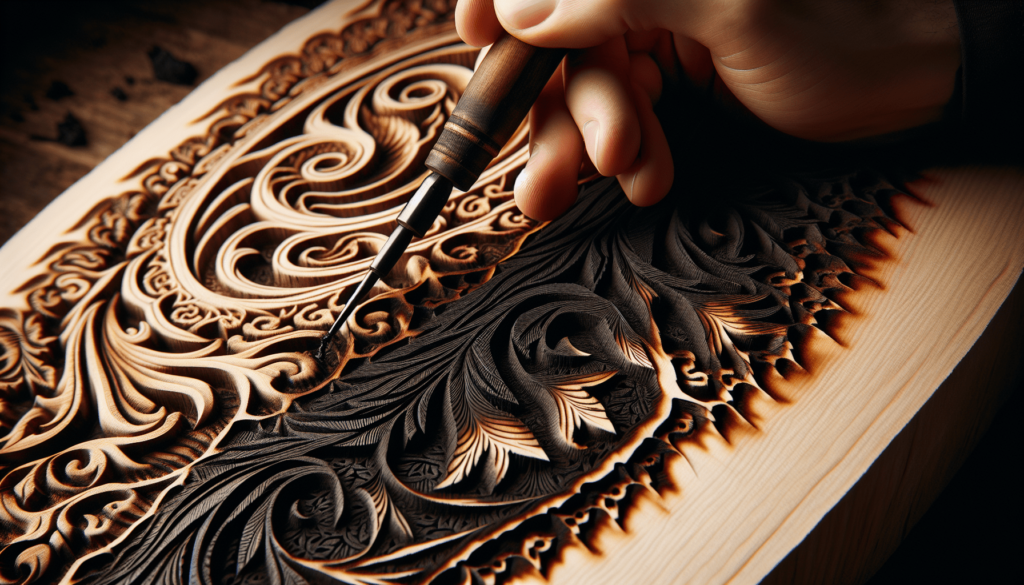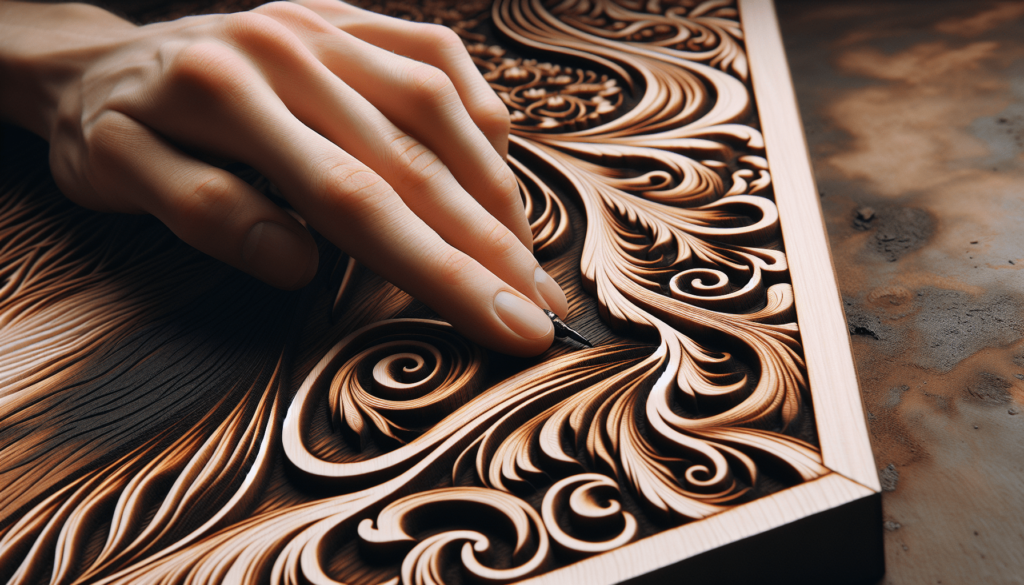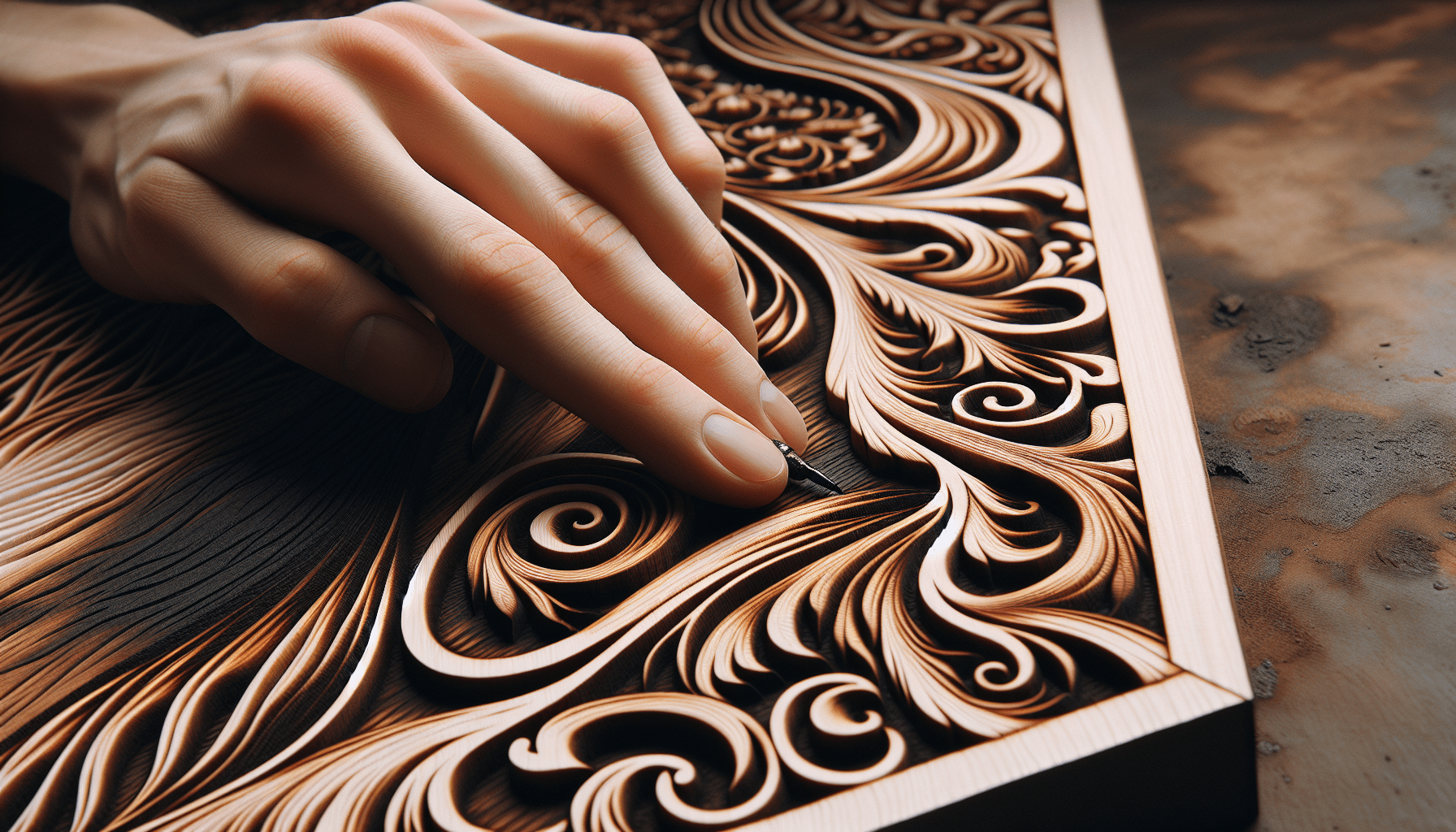I was recently pondering the different ways we describe the same thing when I stumbled upon the term “wood burning.” It’s fascinating how language evolves, and words take on diverse forms. In my exploration, I discovered that “pyrography” is a captivating synonym for wood burning. This age-old technique involves using heated tools to create intricate designs on wood surfaces, transforming ordinary planks into beautiful pieces of art. The art of pyrography is both a test of skill and patience, where every burn mark contributes to a larger, stunning picture. Have you ever found yourself pondering the many words we use for the simple act of burning wood? Maybe you were enjoying the snap, crackle, and pop of a roaring fireplace and thought, “What else could I call this?” Or perhaps you were crafting an elaborate piece on backyard campfires and needed to spice up your vocabulary. Either way, you’ve come to the right place.

What is a Synonym for Wood Burning?
When I first started diving into this topic, I was genuinely surprised by the number of terms that exist for wood burning. It’s as if humanity, in its infinite wisdom, decided that just one word wasn’t nearly enough to capture all the nuances of this age-old activity. And you know what? I completely agree. So let’s explore some of these colorful alternatives, shall we?
Pyrography: The Artistic Expression
Ah, pyrography. It sounds fancy, doesn’t it? Almost like something you’d study at a prestigious art school. This term specifically refers to the art of burning designs into wood. If you’ve ever seen those exquisite wooden plaques or coasters with intricate designs, you’ve seen pyrography in action.
Pyrography is derived from the Greek words “pur” which means fire and “graphos” which means writing. It’s a meticulous process that involves using a heated tool to etch patterns into a wooden surface. Think of it as drawing, but instead of ink, you have fire.
Combustion: The Scientific Term
Okay, maybe this one isn’t as exciting, but it’s definitely important. Combustion is the chemical term for burning, and it applies to wood just as much as it applies to anything else. When wood burns, it combines with oxygen to produce heat, light, and a whole lot of smoke. It’s one of those terms you probably glossed over in high school chemistry but should definitely have a place in your vocabulary arsenal.
Kindling: Getting Things Started
If you’ve ever tried to start a fire, you probably know what kindling is. For the uninitiated, kindling refers to small sticks and twigs used to get a fire going. Before you can get those big logs roaring, you need some kindling to take the initial spark. So in a way, kindling is the unsung hero of wood burning.
Incineration: The Intense Version
“Incineration” sounds like something you’d do to your arch-nemesis rather than a piece of firewood. But technically, it’s just another term for burning something completely to ash. If you’ve ever watched a firefighter burn down a building for training purposes, that’s incineration. It’s a bit more intense than your average backyard bonfire, but it’s another word for the same underlying process.
Firemaking: The Traditional Skill
This term is straightforward but captures the essence of starting a wood fire. Firemaking refers to all the steps involved in creating and maintaining a fire. It’s a skill that’s been passed down through generations, and while it’s not a single word, it’s certainly a vital part of wood burning.
Charring: A Partial Burn
Charring involves burning the surface of the wood to create a charcoal layer. This term is often used in cooking, especially in techniques like barbecue and smoking. When wood is charred, it doesn’t entirely burn to ash; instead, the exterior blackens. If you’ve ever roasted marshmallows until they’re a delightful mix of golden-brown and crispy black, you’ve engaged in charring.
Firing: The All-Encompassing Verb
To “fire” can mean numerous things in English, but in the context of wood burning, it’s a go-to verb. You can “fire up” the grill, “fire” some pottery, or simply sit around a “fire.” It’s an all-encompassing term that fits various forms of combustion and heating.
Bonfire: The Festive Burn
Bonfire brings an element of celebration to the act of burning wood. Whether it’s Guy Fawkes Night in the UK, Fourth of July in the United States, or just a casual summer evening, a bonfire is synonymous with gathering people together. It’s not just burning wood; it’s creating a communal experience.
Searing: The Quick, Hot Burn
This term is borrowed from the culinary world but fits nicely in the wood-burning family. Searing involves applying intense heat to the wood, resulting in a quick, superficial burn. Think of it as the fiery equivalent of a first-degree burn—painful, visible, but not deep.
Braising: Controlled Burning
Although more commonly associated with cooking, braising in the context of wood burning could refer to maintaining a controlled, low flame over an extended period. It involves a slow process where the wood is kept at a low temperature to achieve a gradual burn.
How These Terms Compare
Now that we’ve sifted through these terms, let’s sum them up in a handy table for quick reference.
| Term | Description | Context |
|---|---|---|
| Pyrography | Burning designs into wood | Art and Craft |
| Combustion | Chemical process of burning | Science |
| Kindling | Small sticks/twigs to start a fire | Firemaking |
| Incineration | Complete burning to ash | Waste disposal, Intense burns |
| Firemaking | Process of starting and maintaining a fire | Traditional Skills |
| Charring | Partial burning, creating a charcoal layer | Cooking |
| Firing | General term for burning | General use |
| Bonfire | Large, festive fire | Celebrations |
| Searing | Quick, hot burn | Cooking |
| Braising | Controlled, low-temperature burning | Cooking |
Why So Many Terms?
Have you ever wondered why English has so many terms for burning wood? After all, fire is fire, right? Well, not exactly. The diversity in terminology reveals how multifaceted fire can be. Fire isn’t just a physical phenomenon; it’s an element loaded with cultural, practical, and emotional significance.
Cultural Importance
Fire has played a crucial role in human history. From rituals to revolution, fire has been a constant companion. Having multiple terms to describe the act of burning wood reflects the many ways fire intersects with our lives. For example, the term “bonfire” conveys more than just a fire; it evokes imagery of community, celebration, and tradition.
Practical Applications
Different terms also highlight the various uses of wood burning. Combustion is a scientific process, while pyrography is an artistic one. Charring can be culinary, and incineration is often industrial. Each term captures a unique nuance, making our language richer and more precise.
Emotional Undertones
Fire evokes a range of emotions, from the warmth and coziness of a hearth fire to the rage and destruction of an incinerated building. The variety in terminology allows us to express these different feelings more accurately. A “bonfire” feels inviting and joyful, while “incineration” sounds almost violent.
Fun Facts About Wood Burning
Alright, I’ll admit it—there’s a lot more to wood burning than just vocabulary. Here are some fun facts that might ignite your interest further.
The Science of Colors
Did you know that the color of a flame can tell you a lot about its temperature? For example:
- Red flames: Around 1,000-1,800°F (535-980°C)
- Yellow flames: About 2,000°F (1,100°C)
- Blue flames: Can reach up to 3,000°F (1,650°C)
So the next time you’re staring into the flickering firelight, you can impress your friends with your newfound knowledge of flame colors.
Unique Woods, Unique Smells
Each type of wood has a distinct smell when it burns. For instance, pinewood often releases a pleasant, resinous aroma, while cherry wood has a sweet scent. Experimenting with different types of wood can make your fireside experience a sensory delight.
Ancient Fire-Starter Techniques
Before the convenience of matches and lighters, people used all sorts of ingenious methods to start fires. Have you tried making a fire using a bow drill or a fire plough? It’s a painstaking process, but it’s incredibly satisfying once you succeed.

Practical Tips for Wood Burning
You didn’t think we’d go through all these fancy terms without giving some practical advice, did you? Whether you’re a seasoned firemaker or a rookie, these tips should help you make the most out of your wood-burning endeavors.
Choosing the Right Wood
Not all wood is created equal when it comes to burning. Here’s a quick guide:
- Hardwoods like oak, maple, and hickory: Burn longer and hotter. Great for sustained fires.
- Softwoods like pine and spruce: Ignite quickly but burn faster. Ideal for kindling.
- Aged wood: Burns more efficiently and produces less smoke. Green, or freshly cut wood, tends to be smoky and harder to ignite.
Safety First
It sounds repetitive, but safety cannot be overstressed. Always:
- Keep a bucket of water or a fire extinguisher nearby.
- Never leave a fire unattended.
- Ensure your fire is fully extinguished before leaving the area.
- Keep flammable materials well away from your fire.
Ventilation is Key
If you’re burning wood indoors, proper ventilation is essential. An open flue or chimney isn’t just about directing smoke outside; it also ensures that fresh air can enter to sustain combustion.
Fire Maintenance
A good fire needs to be tended. This means adding wood gradually, poking and turning logs to ensure they burn evenly, and managing ash buildup. It’s like caring for a pet—if you neglect it, things can go awry quickly.
Why People Love Wood Burning
I don’t know about you, but there’s something almost magical about sitting around a fire. Here are a few reasons why people find it so captivating.
The Experience of Communal Warmth
There’s a reason fires have been at the center of human gatherings for millennia. The warmth and light of a fire create a cozy, inviting atmosphere that naturally draws people together. It’s like nature’s most primal social media.
Connection to Nature
In our increasingly digital world, burning wood offers a tangible connection to nature. Gathering, chopping, and burning wood can be a grounding activity that reminds us of simpler times.
Meditative Quality
The act of tending a fire can be incredibly meditative. The repetitive motions of adding wood and adjusting logs, coupled with the mesmerising sight of flickering flames, make for a calming ritual.
The Sensory Delight
From the crackling sound to the distinct aromas of different woods, burning wood engages multiple senses. It’s an experience that can transport you back to fond memories of camping trips, family gatherings, or cozy winter nights.
Sustainable Living
For many, burning wood is a way to live more sustainably. When managed responsibly, wood burning can be a renewable source of energy. Using wood from local, sustainably managed forests minimizes carbon footprint compared to reliance on fossil fuels.
Conclusion
So, the next time you find yourself at a loss for words by the fireside, you’ll have a whole arsenal of terms at your disposal. Whether you’re talking about the art of pyrography, the intensity of incineration, or just enjoying a simple bonfire, you’ll be able to impress (or perhaps annoy) your friends with your extensive vocabulary. Just remember—while the words might be many, the experience of burning wood is an ancient, simple joy that words can only begin to describe.

